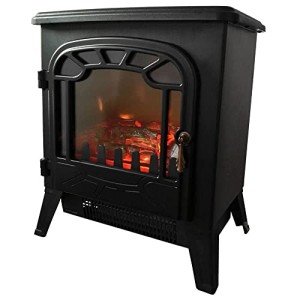The Charm and Functionality of Fireplaces: A Comprehensive Guide
Fireplaces have long been a central feature in homes, representing warmth, companionship, and convenience. They are available in various styles, products, and fuel types, accommodating the choices and requirements of varied property owners. This post explores the multifaceted world of fireplaces, exploring their history, types, installation factors to consider, and upkeep tips, while providing FAQs to address common queries.
A Brief History of Fireplaces
Historically, fireplaces worked as the cornerstone for cooking and heating homes. In ancient times, an open hearth was often positioned in the center of a dwelling. Over centuries, architectural advancements assisted in the development of more advanced designs, evolving from basic stone structures to elaborate mantels that administer over modern living areas.
Secret Historical Milestones:
- Ancient Times: Open fires in caverns and primitive huts for heat and cooking.
- Middle Ages: Large, frequently centralized chimney structures in fantastic halls of castles.
- Renaissance: Decorative mantels and designs gain popularity, with the fireplace becoming a symbol of wealth and status.
- Industrial Revolution: Advancements in products and producing enable a more comprehensive series of fireplace styles.
- Modern Era: Gas and electric fireplaces end up being prevalent, enabling increased benefit and safety.
Types of Fireplaces
Today, numerous types of fireplaces are offered, each with its special attributes. Below is a breakdown of the most typical types:
| Fireplace Type | Description | Pros | Cons |
|---|---|---|---|
| Wood-Burning | Traditional fireplaces fueled by wood. | Authentic experience, heat output. | Labor-intensive, requires appropriate venting/maintenance. |
| Gas | Fireplaces that use natural gas or propane. | Easy to utilize and keep. | Less atmosphere compared to wood. |
| Electric | Utilizes electricity to produce heat and flames. | Safe, no venting required. | Minimal heat output, higher energy expenses. |
| Bioethanol | Uses bioethanol fuel, producing clean flames. | Ecologically friendly, portable. | Needs routine refueling. |
| Pellet | Uses compressed wood pellets as fuel. | Tidy burning, sustainable. | Needs power for operation. |
Additional Considerations
When selecting a fireplace, it is necessary to consider factors such as:
- Fuel Availability: Consider what fuels are easily available in your area.
- Area and Aesthetics: The size of your living area and your style choices must assist your option.
- Building Regulations: Always seek advice from local guidelines to make sure compliance and security.
Setup Considerations
Setting up a fireplace involves more than simply putting a structure in your house. Comprehensive planning, professional input, and adherence to safety codes are critical. Here are some critical steps:
- Planning: Consider the size and kind of fireplace, where it will be positioned, and its desired usage.
- Assessment: Hire a licensed specialist to evaluate your home and ensure proper installation.
- Allows: Obtain any required structure authorizations from regional authorities.
- Materials: Select appropriate products for the fireplace and surrounding area. Ensure they are fireproof and created for your fuel type.
Upkeep Tips for Fireplaces
Regular maintenance ensures your fireplace runs securely and effectively. Here are vital maintenance ideas classified by fireplace type:
Wood-Burning Fireplaces
- Chimney Cleaning: Have your chimney cleaned every year to prevent creosote accumulation.
- Inspect for Damage: Check for cracks and damage to the firebox and chimney structure.
- Firewood Storage: Store firewood away from your house to prevent bug infestations.
Gas Fireplaces
- Log Inspection: Regularly examine ceramic logs for cracks and change if essential.
- Vent Cleaning: Ensure that vents are devoid of blockages.
- Pilot Burner Check: Test pilot lights and ignition systems frequently.
Electric Fireplaces
- Cord Inspection: Frequently check electrical cables for tearing or use.
- Clean Surfaces: Wipe down surfaces routinely to get rid of dust and particles.
- Smoke alarm: Ensure smoke detectors in the vicinity are functional.
Bioethanol and Pellet Fireplaces
- Fuel Storage: Store fuels in a cool, dry place away from direct sunshine.
- Regular Refueling: Monitor fuel levels and refuel as required.
- Ventilation: Ensure correct ventilation when utilizing these fireplaces.
Frequently asked questions About Fireplaces
Q1: Do I need a license to install a fireplace?
Yes, a lot of towns need authorizations for fireplace installations to guarantee security and compliance with regional building regulations.
Q2: How frequently should I clean my chimney?
It is advised to have your chimney cleaned at least when a year, particularly if you utilize your fireplace frequently.
Q3: Can I transform a wood-burning fireplace to gas?
Yes, numerous homeowners transform wood-burning fireplaces to gas for benefit, but seeking advice from an expert is recommended to make sure a proper conversion.
Q4: Do electric fireplaces produce heat?
Yes, electric fireplaces can produce heat; however, their main function is frequently for atmosphere, making them an ideal option for those who desire a fire appearance without comprehensive heating.
Q5: Are bioethanol fireplaces safe?
Bioethanol fireplaces are typically safe when used correctly; however, they need proper ventilation, and users ought to follow all maker guidelines.
Fireplaces not only add aesthetic interest homes but also offer useful heating services. With different types, styles, and upkeep requirements, house owners can make informed options that best match their needs and way of lives. Whether choosing for the charm of a wood-burning fireplace or the benefit of a gas design, a fireplace can substantially boost a living area's convenience and environment. As Web Site remains a centerpiece in homes, it continues to foster warmth, discussion, and connections amongst family and good friends.

